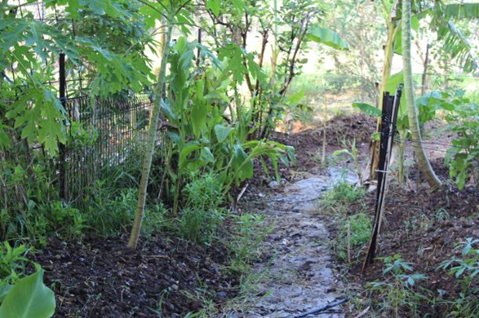The Wet
Weeds rampant
At last the rains have come and brought back life to the bush and our gardens. Those who are dismayed at the lush weed growth in their vege patches, don’t despair. If you have lots of weeds it means your soil is ‘alive’ with lots of micro-organisms and other little critters.
All that is necessary is to chop and drop or flatten the weeds (except for couch grass it really needs removing), cover the beds with cardboard and then a layer of manure – horse, cattle or chook or a combination and then a layer of leaves. Keep everything nice and damp and you will soon have a rich bed of compost ready for planting dry season veges. If you want to go a step further a layer of charcoal through the manure will help keep the bed moist and provide ‘apartment blocks’ for the micro organisms so they don’t get washed away if we get more big rains. For those who make bokashi compost with their food scraps these should also form one of the lower layers. The Bokashi bran we sell at Windjana Wellness has biochar – activated charcoal included so it does double duty.
Weeds under cover
It is also useful to scatter mung beans or peanuts seeds over the prepared beds.
These can not only be harvested for sprouting or eating but provide living mulch when planting out more tender veges The plants can then be chopped and dropped to provide more mulch as the season moves on.
Support Plants
Because out soil needs lots of mulch and organic matter to create fertility it is useful to grow some specific plants simply to cut their leaves for use as mulch and for feeding the soil. The best plants for this purpose are legumes as they fix nitrogen in the soil through not only their leaves but also through their roots. The wet season is the time to cultivate these plants so they are ready for the dry.

